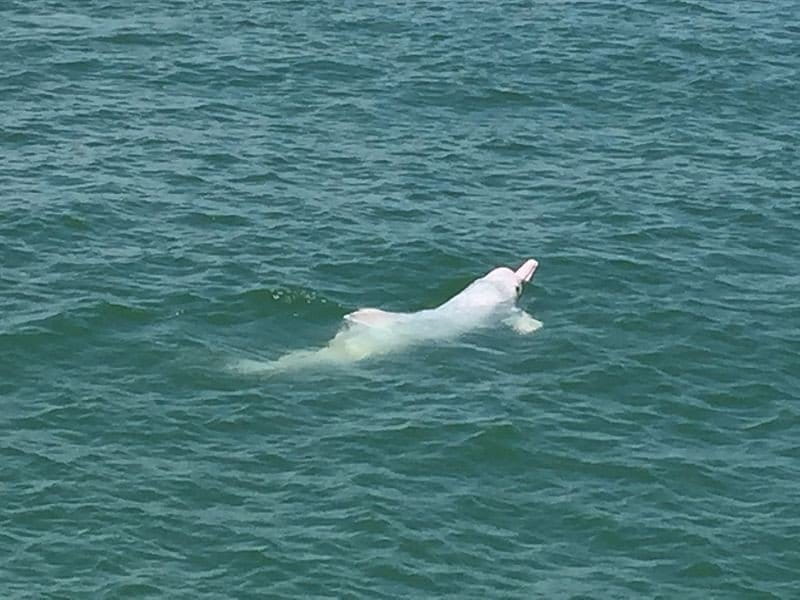- Proposed expansion of the Hong Kong airport and ongoing construction of bridge from Hong Kong to Macau could severely threaten pink dolphin populations in Hong Kong waters, conservationists say.
- Pink dolphin (or Chinese white dolphin) numbers in Hong Kong waters have dropped from 158 in 2003 to around 60 now, according to experts.
- To offset impacts of the construction projects, Hong Kong government plans to create a marine park for the dolphins, but conservationists think that such a reactive approach may not be effective.
The future of Chinese white dolphins — also called pink dolphins — in Hong Kong waters could be severely imperiled. Proposed expansion of the Hong Kong airport and ongoing construction of a new bridge from Hong Kong to Macau could be a “nail in the coffin” for the dolphins, conservationists say.
“We think that if that project goes ahead, then it will probably drive the dolphin away from Hong Kong waters,” Samuel Hung, chairman of the Hong Kong Dolphin Conservation Society, who has been monitoring activity of these dolphins for almost 20 years, told Agence France Presse (AFP). “In some ways it seems like we are pushing them closer and closer to the edge of the cliff and if we’re making that final push, they will be gone forever. I think now is the time to get our act together.”
The Chinese white dolphin is believed to be a variety of the Indo-Pacific Humpback Dolphin, although some biologists consider them to be a separate species called Sousa chinensis. These dolphins are distributed from east of India to China and Australia, according to the IUCN Red List of Threatened Species.
In Hong Kong, these dolphins are major tourist attractions because of their unusual white or pink skin. However, their numbers in Hong Kong waters have dropped drastically, Hung said, from 158 in 2003 to just around 60.

While overfishing and environmental pollution has pushed many of these dolphins away from the region, increase of high-speed ferry traffic from Hong Kong to Macau is a major source of disturbance, Hung added. In fact, according to WWF-HongKong, high-speed ferry traffic has increased 48 percent from 1999 to 2010, with ferry routes crisscrossing prime dolphin habitats.
Moreover, ongoing construction of the 50-kilometer (~31 miles) Hong Kong-Macau bridge is rapidly changing the dolphin’s habitat, experts say. The proposed runway of Hong Kong Airport will reclaim 650 hectares of seabed, according to WWF-Hong Kong, “causing grave concern for the survival of an already stressed and apparently declining dolphin population in Hong Kong.”
However, the Hong Kong government plans to create a marine park to offset the impacts of various construction projects in dolphin habitat, according to AFP.
“To compensate for the permanent loss of Chinese white dolphin habitats arising from the land formation works, the designation of a new marine park of approximately 2,400 ha (24 square kilometres) in the waters north of the third-runway project has been proposed,” a statement from the agriculture, fisheries and conservation department said.
But conservationists believe that the dolphins could disappear before the marine park is in place.
“Sadly, we think that the Hong Kong government is taking a reactive approach, which is develop first, conserve later,” Samantha Lee, Assistant Conservation Manager, Marine at WWF Hong Kong, told AFP.
